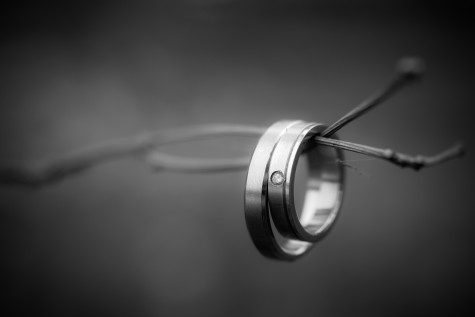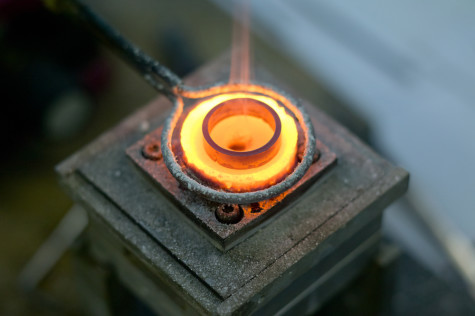 Before World War II, the Roman wedding ritual only blessed the bride’s ring. The male wedding band’s popularity didn’t take off until the 1950s, a combination of jewelry industry marketing and the growing association of masculine domesticity with national prosperity. Suddenly, men could be identified as single or ‘taken’ at a glance.
Before World War II, the Roman wedding ritual only blessed the bride’s ring. The male wedding band’s popularity didn’t take off until the 1950s, a combination of jewelry industry marketing and the growing association of masculine domesticity with national prosperity. Suddenly, men could be identified as single or ‘taken’ at a glance.
Folklore has it that men with wedding rings are more attractive to women. That kind of mate copying effect would be consistent with its equivalent in the animal world. Male guppies seen close to females take on an allure for other female guppies, for example. So in humans, another female who has chosen a particular male may know something about him – he’s a doctor, for example, or a creative genius – that can’t be assessed by looks alone.
But in a largely monogamous marriage system, most people, male or female, can marry if they want to. That is, without meeting or at least seeing the partner signified by the wedding ring, the knowledge that some woman has chosen a particular man doesn’t add much information about his quality as a mate. Plus, there are obvious and significant costs – perhaps even violent consequences – to starting a relationship with that person. Today, a wedding ring may signify that another man has chosen that man, the effect of which the literature hasn’t yet addressed.
Zoologists at Goteborg University have attempted to show a wedding ring effect but found none. No type of indication that a man was married, whether by ring or otherwise, could make their female subjects perceive him either as wealthier or as more attractive.
If he were, in fact, a doctor, his wedding ring might pose problems for him in the workplace. Dozens of studies agonize over whether wedding bands have a place in hospitals, particularly in surgeries. The concern is that a regular scrubbing up procedure might not reach the moist, bacteria-laden strip of skin under the ring. Ornately carved rings carry the most contamination, but even plain rings have been revealed to host a lurking population of Staphylococcus aureus.
 Chances are good the patient on the operating table is also a wedding ring-wearer, in which case he or she could have troubles of their own. The recent trend toward tungsten carbide wedding rings – an incredibly hard compound – has led to concern over how to cut the damned things off during emergency surgeries. Luckily, Dr Rupert Ricks has managed it with a diamond-tipped dental drill.
Chances are good the patient on the operating table is also a wedding ring-wearer, in which case he or she could have troubles of their own. The recent trend toward tungsten carbide wedding rings – an incredibly hard compound – has led to concern over how to cut the damned things off during emergency surgeries. Luckily, Dr Rupert Ricks has managed it with a diamond-tipped dental drill.
For those with the more traditional gold band, you are inadvertently spreading gold wherever you go, like Hansel and Gretel spread crumbs. Curious about this, a chemist in Munich measured the gold leavings from his wedding ring and found them everywhere from his steering wheel to the dust in his house. Clapping at a rock concert resulted in more attrition than fly fishing with a cork-handled rod. The most costly activity, in terms of abrasive loss, was a trip to the beach.
Images: Shutterstock